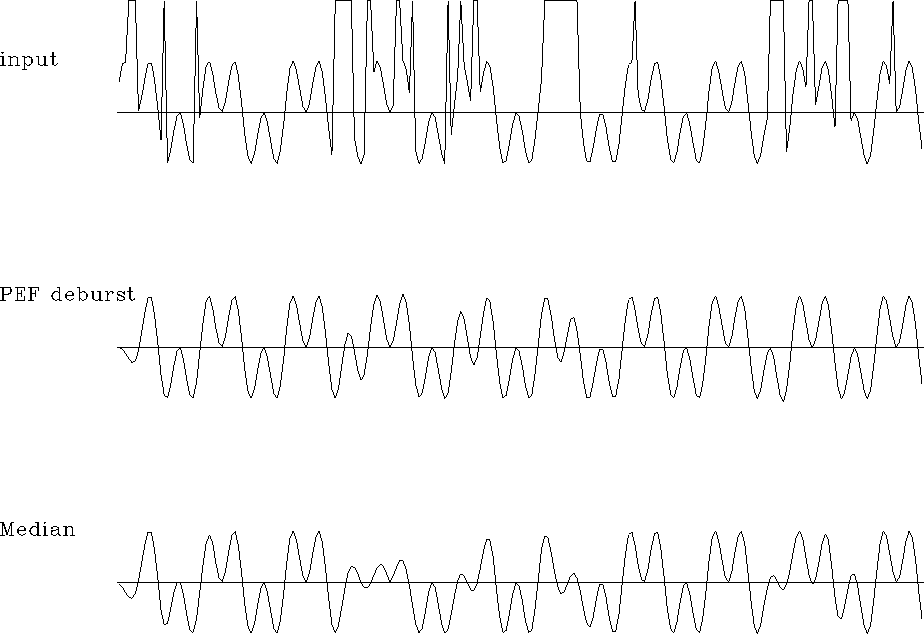First take a random direction ![]() .The residual change connected with going this direction is
.The residual change connected with going this direction is
| (6) |
| (7) |
| (8) |
I experimented with a variety of random and nonrandom directions
![]() .One of my initial guesses
.One of my initial guesses
![]() turned out to be a poor one.
Better results were found by cycling,
one at a time through each filter component.
That saves the cost of the correlation too!
I also tried random component values in
turned out to be a poor one.
Better results were found by cycling,
one at a time through each filter component.
That saves the cost of the correlation too!
I also tried random component values in
![]() .I also tried randomly selecting one component in
.I also tried randomly selecting one component in
![]() to be nonzero.
None of these methods would
tolerate as much noise as the method in TDF.
(In that method, a prior filter (1,-2,1) was guessed,
and residuals of it were sorted to point to bursts,
which were then weighted by zero.)
Some comparisons of the different methods follow:
to be nonzero.
None of these methods would
tolerate as much noise as the method in TDF.
(In that method, a prior filter (1,-2,1) was guessed,
and residuals of it were sorted to point to bursts,
which were then weighted by zero.)
Some comparisons of the different methods follow:
method niter a(1) a(2) a(3) a(4) a(5)
----- ----- ------- ------- -------- -------- --------
TDF 10 1.00000 -3.44381 4.91496 -3.44027 0.99767
pefcycle 2000 1.00000 -1.54487 0.77143 0.00011 -0.02502
pefrand 2000 1.00000 -1.65394 0.91726 0.03670 -0.09572
pefrandm 2000 1.00000 -1.72055 0.98708 0.00670 -0.11133
The TDF method is significantly faster as well as being
better since instead of requiring infinitely many
iterations, it requires only one iteration for
each component of ![]() .I am disappointed this median method
did not work better than the TDF method
because the TDF method requires a prior filter
and the median method does not.
.I am disappointed this median method
did not work better than the TDF method
because the TDF method requires a prior filter
and the median method does not.
|
pefdeburst
Figure 1 (a) Bichromatic data with bursty noise. (b) Cleaned by L2 method of TDF. (c) Random directions and median distances. |  |
Some comparisons are in Figure 1 which shows, not the autoregressive filters themselves but using the filters, the results of restoration of bad data treating it as missing data. The individual filter coefficients, or random directions, did not work as hoped, but we might have better luck using Levinson's reflection coefficients (not tried).
Let us pursue the idea above that each component of model space can be handled independently, but let us do it in another problem where there are many more components in model space and it seems plausible that many of them would be hardly related. Let us choose a truly huge problem, say inverse hyperbola superposition.